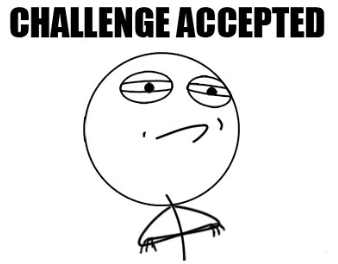Reading
Lately a few people have inquired as to what in the good goddamn I think I'm doing posting about pre-Meiji Japanese writing as if it were legible. I don't usually post about this sort of thing, but since my own journey down this particular rabbit hole was complete serendipity, I figure that by passing on the information I might also free myself of its eldritch weight. You know, by transferring it to you. It's like The Ring except you have to sit down with a dictionary and puzzle over the curse for like half an hour before it can take effect.
So this was a couple of years ago now. I was trawling the discount shelves at the Junkudō home base in Ikebukuro when I came across this book: Genten de tanoshimu Edo no sekai — Edo no bungaku kara ukiyo-e/nishiki-e made 原典で楽しむ江戸の世界—江戸の文学から浮世絵・錦絵まで ("Enjoying die Edowelt through primary texts: from Edo literature to ukiyo-e/nishiki-e"), edited by Asano Akira 浅野晃 and Katō Mitsuo 加藤光男. There's nothing so astonishing about this book. It's just a collection of short extracts from famous books, presented in facsimile with a printed version of the text alongside and notes and mini-essays providing context along the way. But as I flicked through it, I realized: I could learn to read this stuff. And then I thought: If I were to devote hour upon hour to it, sacrificing entire evenings to the decipherment of marginal scrawls, with no way of even telling if I had arrived at the correct answer.

So it was from Genten de tanoshimu plus two more books I picked up almost at random on the way to the register, Kuzushi-ji sokushūchō: kindai hen くずし字速習帳 近代編 ("Speed-learning cursive exercise book: Modern texts"), ed. Munakata Kazushige 宗像和重 and Kanechiku Nobuyuki 兼築信行, and Murayama Garyū 村山臥龍's Sōsho no kuzushikata 草書のくずし方 ("The encursion of grass script"), that I learned that there is method to the madness of olden-times Japanese orthography.
It really doesn't take that long before things begin to clear up. There's more than one way to write most of the kana syllabary, but not an infinite number of ways. There's probably only three or four times as many hentaigana characters in regular use as there are modern kana, and given that you have to learn like 2000 kanji to read a newspaper in this country, a couple hundred extra kana aren't that much of a burden. As for the kanji themselves, it really doesn't take long before you start getting an almost mystical feel for the minute differences that distinguish ninben from sanzui. Except when they're indistinguishable, of course. Then you're just screwed. (Oh, or when the rest of the kanji is illegible. Or if it's a really common kanji like 日 or 出, which are always the hardest to get at first.)
To these books I added Kodama Kōta 児玉幸多's Kuzushi-ji kaidoku jiten: Kijō-ban くずし字解読時点:机上版 (Dictionary of cursive character decipherment: on-desk edition), which has proved invaluable, and I believe it was a commenter here who hipped me up to the University of Tokyo's electronic cursive character dictionary database (電子くずし字字典DB), which is mostly useful for confirming theories: "Okay, I'm pretty sure this is a 憑, but could it really be written like that? Let's find out..."
The final piece in the puzzle is texts to practice on, and here Waseda has you covered. There's all kinds of crazy stuff in this database, from stuff that everyone knows (Bashō, Ukiyoburo) to stuff that no-one knows (can't list it because I don't know it). And the greatest thing about it is that if you go deep enough, a print version of what you are reading may not even exist. You may be one of only a couple dozen people to have read the book in a century.
And it may contain fart jokes that you can use in your blog.
![[No-sword]](http://no-sword.jp/images/site/no-sword_banner.jpg)



Kindaichi:
If you are interested in learning to read komonjo and other manuscripts in their original forms, then I would strongly recommend dedicating time to the fine Kashiwa Shobō series for a firm foundation:
http://www.kashiwashobo.co.jp/new_web/pamph/pamph08.html